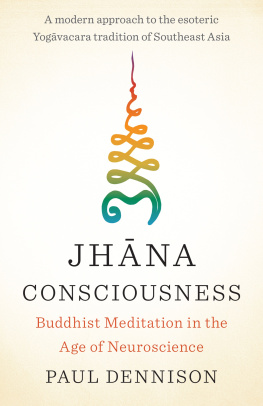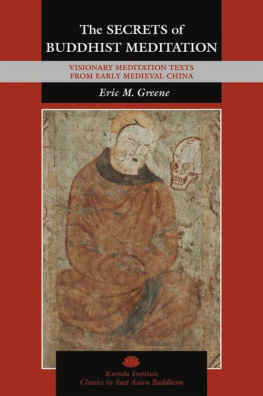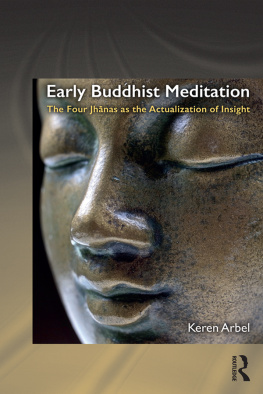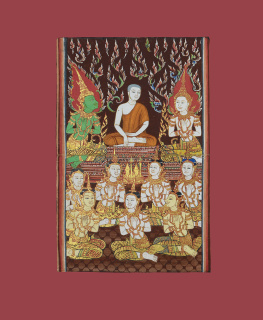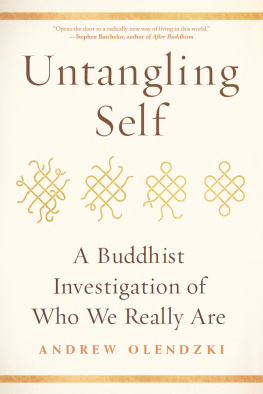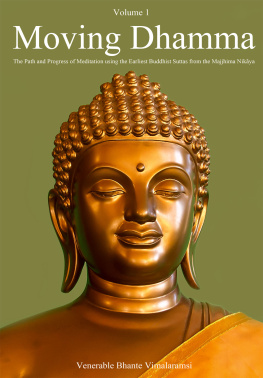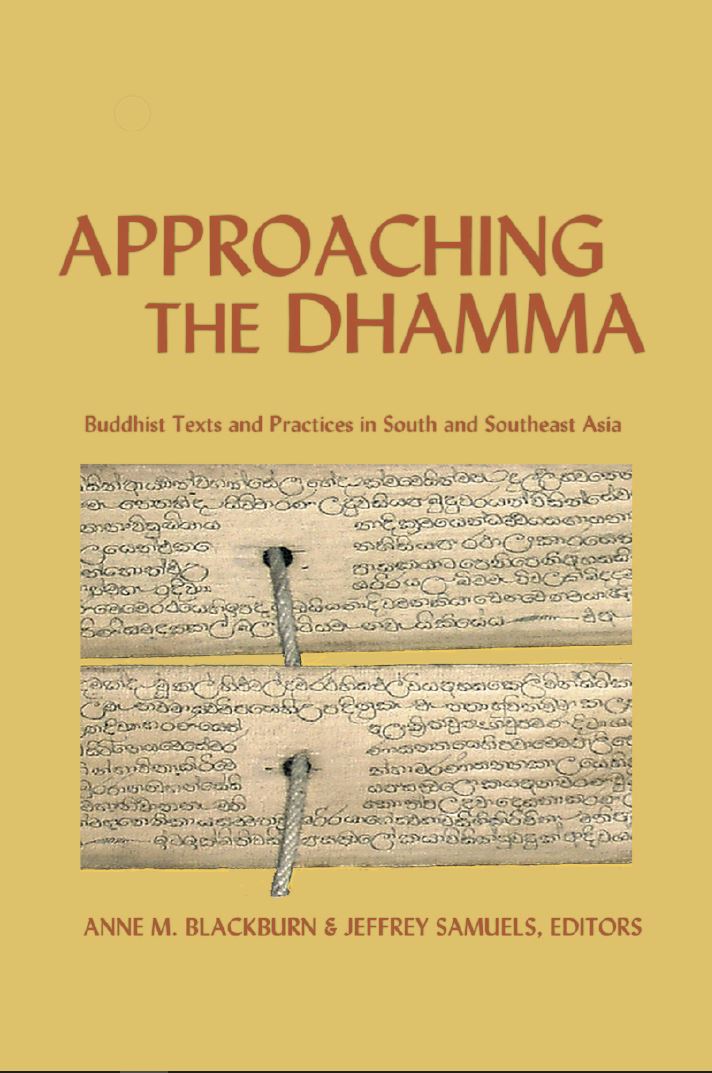The scanning, uploading, and distribution of this book via the Internet or by any other means without the permission of the publisher violates the copyright.
You support Pariyatti in its mission by honoring the copyright and by not sharing this e-book broadly with others who might otherwise purchase it. By encouraging others to purchase e-books, you will be helping Pariyatti to continue to bring future books such as this one to a broader audience.
Please purchase only authorized electronic editions and do not participate in or encourage electronic piracy of copyrighted materials. Thank you for your support.
APPROACHING THE DHAMMA
BUDDHIST TEXTS AND PRACTICES IN
SOUTH AND SOUTHEAST ASIA
ANNE M. BLACKBURN
JEFFREY SAMUELS
Editors

BPS PARIYATTI EDITIONS
ONALASKA, WA USA
BPS PARIYATTI EDITIONS
an imprint of
Pariyatti Publishing
867 Larmon Road, Onalaska, WA 98570
www.pariyatti.org
2003 Anne M. Blackburn and Jeffrey Samuels
All rights reserved. No part of this book may be used or reproduced any manner whatsoever without the written permission of BPS PariyattiEditions, except in the case of brief quotations embodied in critical articles and reviews.
Print ISBN: 978-1-928706-19-9
PDF ISBN: 978-1-928706-60-1 (ebook 2010)
ePub ISBN: 978-1-68172-042-5 (ebook 2016)
Mobi ISBN: 978-1-68172-043-2 (ebook 2016)
10 09 08 07 06 05 04 035 4 3 2 1
Library of Congress Cataloging-in-Publication Data
Approaching the Dhamma : Buddhist texts and practices in South andSoutheast Asia / Anne Blackburn and Jeffrey Samuels, editors.
Includes bibliographical references and index.
ISBN 1-928706-19-3 (alk. paper)
1. Dharma (Buddhism) 2. Sri Lanka--Religious life and customs.
3. Spiritual life--Buddhism--Southeast Asia. I. Blackburn, Anne M.,
1967- II. Samuels, Jeffrey.
BQ4195 .A66 2003
294.3--dc21
Contents
Introduction
Approaching the Dhamma is a collection of essays in honor of the late Godwin Samararatne. Although he was involved in various scholarly works, Godwin became best known as a meditation teacher, a role into which he grew over a prolonged period of time during the 1970s.
Godwin was born on September 6th, 1932 into a large family of seven children. During his youth, he studied at Dharmaraja College, a leading Buddhist school in Kandy, where, according to his teachers, he was quite mischievous, though good natured. In 1956, Godwin took a position as a librarian at the public library in Kegalle. After serving there for several years, Godwin shifted to the public library in Matale, and then later again moved, this time to Senanayake Library in Kandy.
While in Kandy, Godwin began to see an old Dharmaraja school friend who had become a monk shortly after graduating from there: Venerable Sevali. At the time, Venerable Sevali was living in the famous Kanduboda meditation center outside of Colombo. While working at Senanayake Library, Godwin also joined a small group of lay people interested in Buddhist doctrine and meditation. This group met twice a week: once to discuss the primary and secondary Buddhist texts on meditation that they were reading, and once to practice meditation. During this period in his life, Godwin took time to visit several forest hermitages, such as Kanduboda and Mitrigala, to meet meditation adepts and to deepen his own practice.
The small Buddhist studies group continued to meet twice a week for several years. During one of the meetings, one member of the group who happened to own a tea plantation in the mountains above Kandy suggested that the group create a Buddhist study and meditation center for lay people. Under the sponsorship of the tea plantation owner and another group with which Godwin was associatedMr. Ratnakaras Friends of the Good Teachings ( Sadaham Mithuru Samuluwa )land was purchased and several buildings were constructed. This became known as the Nilambe Meditation Center.
When the buildings were completed in 1979, Godwin was asked to run the center. He agreed to give it a try. In his usual humorous manner, he stated: At that time, I was a librarian and still single. So, they asked me if I would like to stay there and see what happens. So I said that I will try it. And now I am continuing to try it. That was 1979. And that is how I became a meditation teacher. It just happened.
In the early years of the Nilambe center, Godwin did not teach meditation; even though he made himself available for consultation to the students there, his role was mostly confined to that of caretaker. In this capacity, Godwin invited many lay and monastic meditation teachers to come to the center to conduct retreats. The first retreat held in the center was run by Joseph Goldstein, the co-founder of the Insight Meditation Society in Barre, Massachusetts.
It was not long, however, before Godwin also fell into the role of meditation teacher. His humorous and gentle approach in helping people along the path to enlightenment and away from the experience of suffering led Godwin to become highly sought after as a teacher. His popularity as a meditation teacher and as an emissary of Buddhism soon spread throughout Sri Lanka and beyond to Africa, Asia, Europe, Australia, and the United States.
Rather than teaching a single meditation method, Godwin adapted his teachings to meet the needs of individual meditators. The meditation topics that he assigned to his students ranged from certain forms of tranquility ( samatha ) meditation, mindfulness of the inhalation and exhalation ( npnasati ), cultivating bare attention in which one watches whatever arises, insight meditation ( vipassan ), and meditation on certain themes such as death and dying ( mara nussati ). Underlying all of these techniques however, was the meditation that played a large role in Godwins life and teachingmeditation on loving-kindness ( mett bh van ). In the various retreats he led, Godwin returned again and again to this type of meditation, as he felt that love was a great antidote to self-centeredness and hatred.
Like other remarkable meditation teachers, Godwin did not confine his practice to his meditation cushion. He lived his teachings. Many of those who happened to meet Godwin noted his sense of equanimity and his inner peace. Godwins practice of loving-kindness meditation also bore fruit in his everyday life through his involvement in various social service projects. From the early days of Nilambe, Godwin always remained concerned about being too removed from everyday life; thus, he divided his time between the center and Kandy. In the former setting, he taught meditation and helped his students overcome spiritual suffering. In the latter setting, he involved himself in helping poor people, unemployed women, and the ten precept nuns ( dasa sil mtvas ) in Sri Lanka. He accomplished this through a variety of activities such as supplying financial aid to students, supplying eye glasses to poor people, building a training center where poor unemployed girls and women could be taught income-generating skills, and helping to raise the quality of life for Buddhist nuns or ten precept mothers.
Godwin died on March 27, 2000 from liver failure that was the result of contracting hepatitis in his youth. Godwins undying sense of love and compassion remained with him until his last breath and he continually saw people and advised them even during the period before his death. Though most people would have experienced such a death with pained expressions, Godwin radiated compassion, friendliness, sympathetic joy, and especially equanimity up until the moment of his death. In fact, one close friend of Godwin remarked that the peace which flowed from his every pore may have even been responsible for his immediate death: as he lay there in his hospital bed, his body slowly shutting down, he maintained a smile on his face, perhaps fooling the doctors about the severity of his condition.


